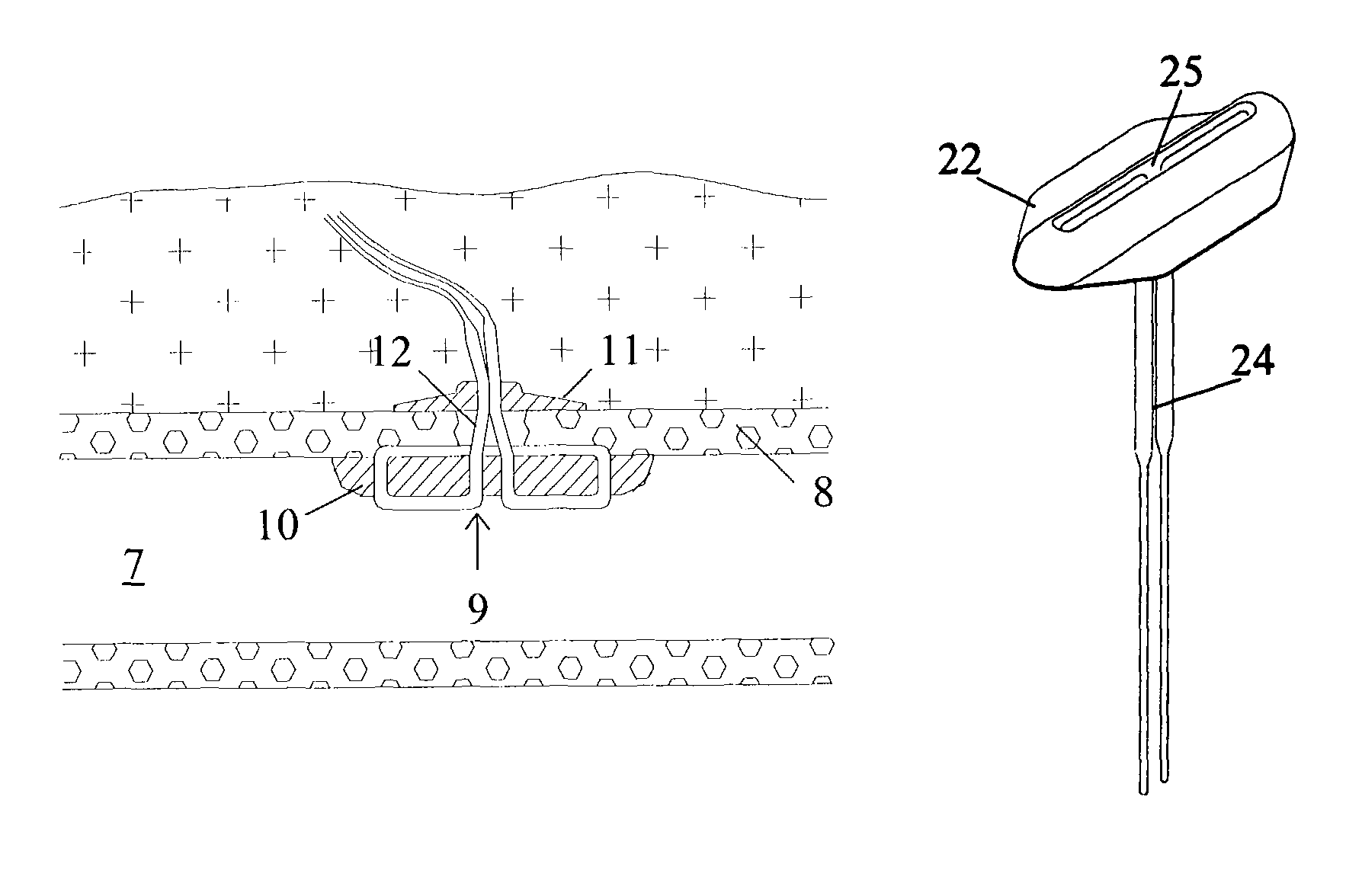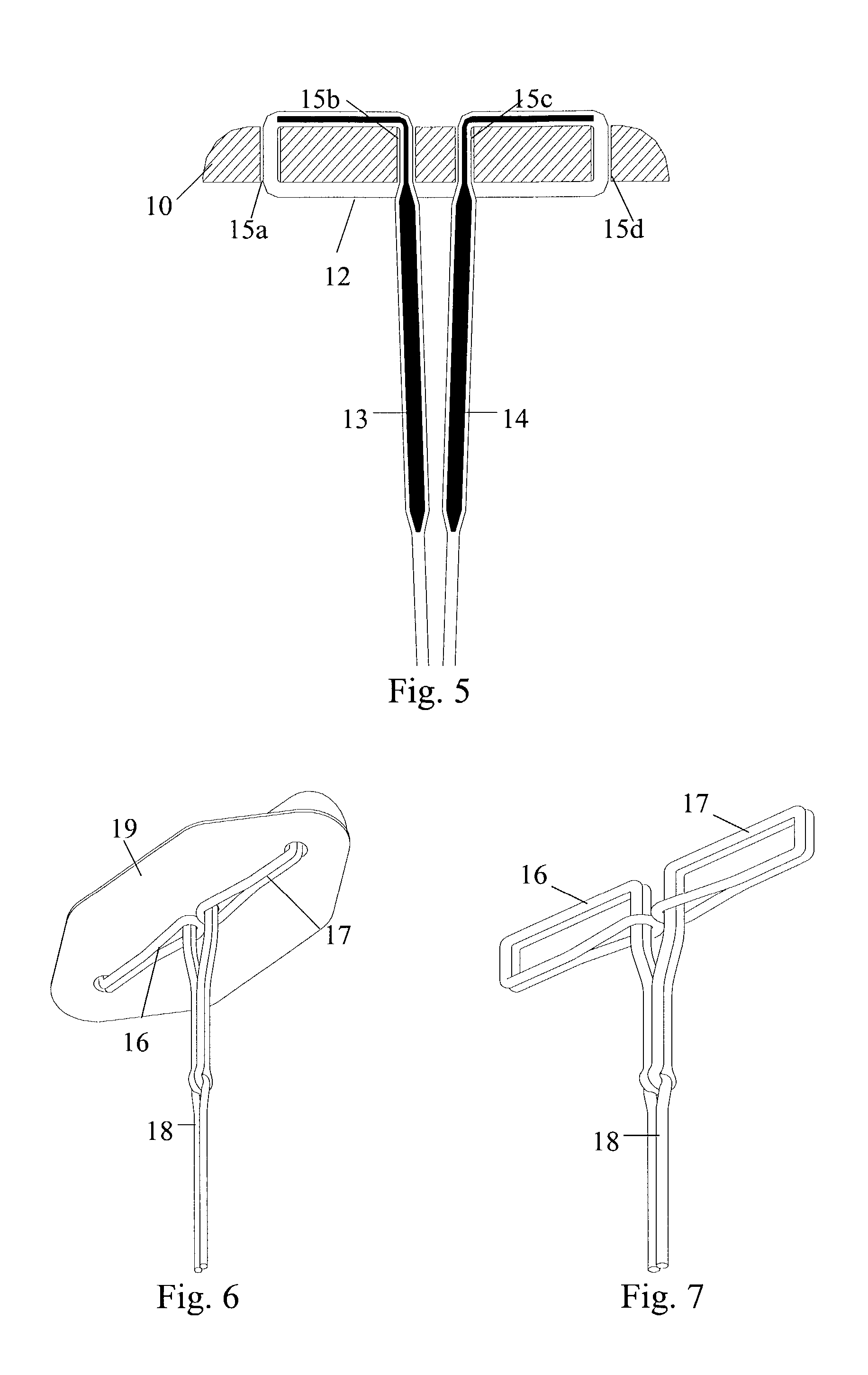Absorbable medical sealing device with retaining assembly having at least two loops
a technology of sealing device and retaining assembly, which is applied in the field of absorbable or bioabsorbable sealing device, can solve the problems of restricting the flow of blood through the vessel, reducing the risk of infection, and loosening the anchoring means inside the vessel, so as to reduce the risk
- Summary
- Abstract
- Description
- Claims
- Application Information
AI Technical Summary
Benefits of technology
Problems solved by technology
Method used
Image
Examples
Embodiment Construction
[0031]In order to effectively seal an arterial puncture wound, an absorbable sealing device for intra-arterial (or extra-arterial) sealing should preferably be made of a material that is characterized by being soft and flexible, i.e. the material is characterized by having a low modulus. As discussed above, it is also important that the device be deformable to fit in the introducer and also be capable of unfolding or expanding in the blood vessel. Such materials can be made from natural biopolymers or from synthetic materials that degrade into harmless components within a living tissue. Examples of materials may be various natural biopolymers, pure or chemically manipulated, based on alginic acid, hyalauronic acid or chitosan. Examples of soft and flexible synthetic absorbable polymers are aliphatic polyurethanes, polyphospazenes and polyorthoesters, and those polymers made from glycolide, lactide, caprolactone, trimethylene carbonate, butyrolactone, 1,4-dioxan-2-one or 1,5-dioxepan...
PUM
 Login to View More
Login to View More Abstract
Description
Claims
Application Information
 Login to View More
Login to View More - R&D
- Intellectual Property
- Life Sciences
- Materials
- Tech Scout
- Unparalleled Data Quality
- Higher Quality Content
- 60% Fewer Hallucinations
Browse by: Latest US Patents, China's latest patents, Technical Efficacy Thesaurus, Application Domain, Technology Topic, Popular Technical Reports.
© 2025 PatSnap. All rights reserved.Legal|Privacy policy|Modern Slavery Act Transparency Statement|Sitemap|About US| Contact US: help@patsnap.com



